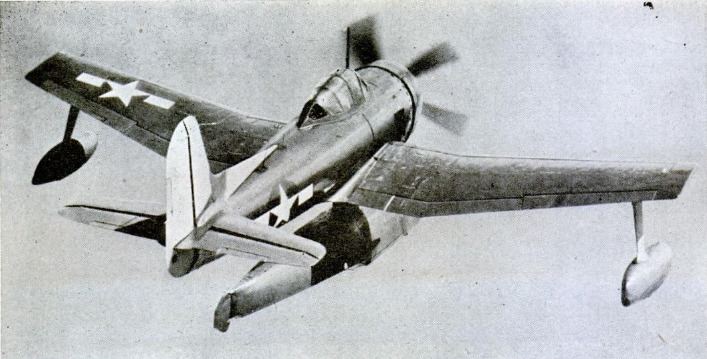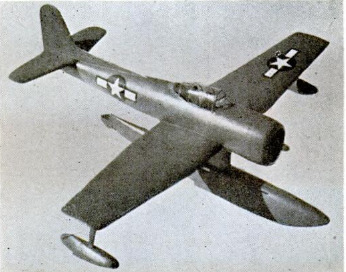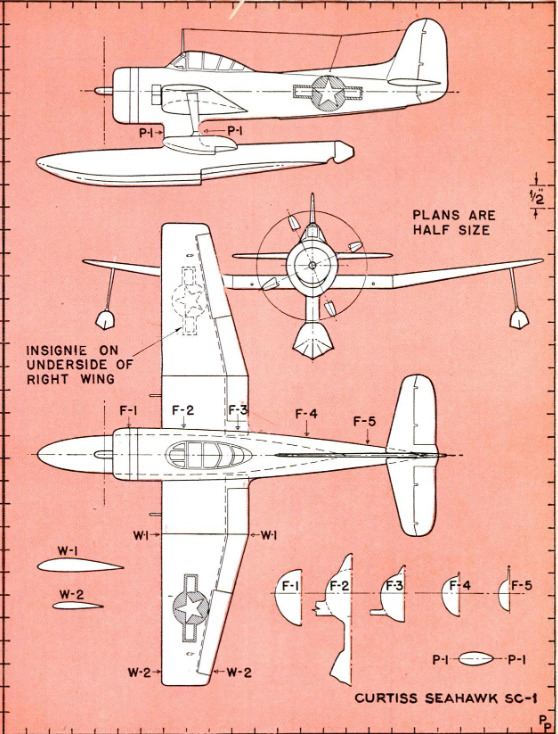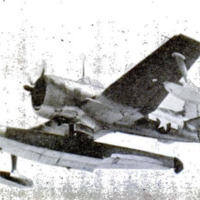Aerial eye of the fleet
Item
-
Title (Dublin Core)
-
Aerial eye of the fleet
-
Article Title and/or Image Caption (Dublin Core)
-
Title: Aerial eye of the fleet
-
extracted text (Extract Text)
-
LATEST in a line of famous scout-observa-
tion planes, the Curtiss Seahawk is fast
replacing the older and battle-weary King-
fishers and Seagulls that have served the
Navy so magnificently. Capable of flying
faster, higher, and farther than any pre-
vious Navy scout plane, the Seahawk
mounts two large-caliber guns in the wings
to keep itself out of trouble. This single-
seat, single-float, low-wing seaplane devel-
ops nearly three times the power of earlier
models; it has a nine-cylinder engine and
a four-blade propeller. Measuring 36’ 5” in
length, the Seahawk has a span of 41".
As with the previous planes in this series,
modelers will find all the necessary details
and measurements on the accompanying
scale drawing. No templates have been laid
out for the canopy, however, because of the
difficulty involved in working with such
small sizes. After carving the cockpit in
the fuselage, fashion the canopy out of
small strips of celluloid by the “cut and
try” method and cement it in place.
Sand the scalloped underside of the float
and cement the unit to the streamlined pylon
which is, in turn, cemented to the fuselage.
The thin keel strip under the rear half of
the fuselage can be simulated by a length
of wire carefully cemented into place.
-
Contributor (Dublin Core)
-
Paul Plecan (article writer)
-
Language (Dublin Core)
-
Eng
-
Date Issued (Dublin Core)
-
1945-10
-
pages (Bibliographic Ontology)
-
154-155
-
Rights (Dublin Core)
-
Public domain
-
Archived by (Dublin Core)
-
Sami Akbiyik
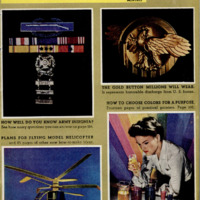 Popular Science Monthly, v. 147, n. 4, 1945
Popular Science Monthly, v. 147, n. 4, 1945

